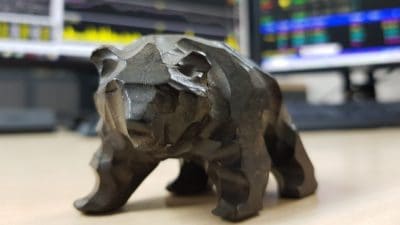Clearly, the world is undergoing a fundamental shift away from hydrocarbons towards green energy. And with that in mind, I have been searching the market for the top renewable energy stocks for next year and beyond.
Four different ‘buckets’ of investments are available to buy to participate in the green energy revolution.
Multiple opportunities
The first bucket contains the corporations that produce the materials required to manufacture equipment for the renewable energy industry. These companies produce the resources needed in the manufacturing process. As such, they may not conform to all investors specifications because these businesses are often located in the mining industry, which has a poor environmental track record.
The second bucket includes those who produce core components for the renewable energy industry. These are companies that manufacture items such as solar panels, wind turbines and electricity transformers.
The third bucket features those companies which produce electricity from green sources. Solar and wind farm owners are classic examples.
And the final bucket includes speculative companies. These businesses are still exploring new technologies which may have an essential role in the green energy revolution but are years away from commercialisation. As many of these operations are speculative, they will certainly not be suitable for all investors.
Each one of these different groups of companies has its own benefits and drawbacks. They also face their own risks and challenges. For example, many mining businesses have a poor environmental track record, which could discourage investors. However, other investors may be discouraged from investing in renewable energy generators, as this sector is highly regulated and incredibly competitive.
Personally, I would buy from all four groups. I believe this would help diversify my portfolio away from any one single technology or risk factor.
Speculative renewable energy stocks
Working through the list of different organisations in reverse, my favourite speculative investment right now is the hydrogen company AFC Energy (LSE: AFC).
There are a range of different hydrogen companies on the market, all working with experimental technologies. However, I feel more comfortable with AFC than I do with its peers.
The firm is developing alkaline fuel cell systems that use hydrogen to produce clean electricity. It already has a product out there on the market. AFC’s energy system is being used as the primary power source for Extreme E’s race vehicles.
The system is able to create hydrogen using solar power, which can then be stored and used to charge electric vehicle batteries when needed.
The company’s involvement in this event has ignited interest in the technology. It has also shown it is possible to produce clean, green hydrogen without significant capital expenditure.
Even though it could be years before the business actually makes money, and there is no guarantee this technology will have commercial potential, I would buy the stock for my portfolio today as a speculative play.
Green energy generation
When it comes to companies that produce green energy, there are plenty of options. One of the biggest and most prominent companies in the space is SSE (LSE: SSE). This group used to be one of the country’s largest utilities, but it sold its retail division several years ago to concentrate on power generation.
Going forward, management has earmarked billions of pounds to bulk up its renewable energy generation. It wants to triple output by 2030. To meet this goal, the group is looking to build the world’s largest offshore wind farm.
As one of the most established businesses in the space, I think SSE would make an excellent foundation investment for my portfolio of renewable energy stocks. Shares in the company also support a dividend yield of 4.9%, at the time of writing.
I would also buy Greencoat UK Wind. This firm focuses on buying and building wind farms and offers a dividend yield of 5.5%, at the time writing. NextEnergy Solar would also fit into my portfolio as it focuses on solar power and offers a yield of 6.7%, at the time of writing.
All of these companies could face the same risks as we advance. These include additional competition in the sector, pushing down profit margins and regulations, which may restrict earnings potential.
Critical power
Of all the companies that produce critical components for the renewable energy industry, XP Power (LSE: XPP) stands out.
The company produces transformers that convert power and help manage the electricity supply. As the world moves away from hydrocarbons towards renewable energy, demand on the electricity grid is expected to grow as green energy courses through the system.
Managing this power will become a big market. According to XP’s recent trading updates, the company is already experiencing a lift in demand.
Despite its potential, XP’s growth is by no means guaranteed. There are plenty of competitors in the power management and transformer market, and the group will need to remain competitive to maintain its market share. It could also face challenges from increasing materials costs and supply chain disruptions.
Copper producers
Within the bucket of renewable energy stocks I would buy for 2022 and beyond are the copper producers.
Estimates suggest copper production will have to increase by around a third over the next decade to meet the increasing pressure on the electricity grid from green energy.
There are two companies I would buy to take advantage of this, Antofagasta and Glencore. Both these organisations are significant producers and have relatively low production costs compared to the rest of the industry.
Still, as I noted above, the mining industry does not have the best environmental record. Therefore, some investors might want to avoid these companies altogether and concentrate on the businesses outlined above.







